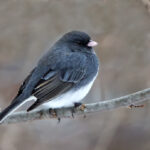Scientists have known for more than a year that bird flu, H5N1, made the jump from wild birds and common poultry to cows and mammals in February/March 2024. What they recently determined is how the transition happened.
The likely spillover occurred between a sick wild bird and a dairy cow in Texas around December 2023. Since then sick cows have shown up in hundreds of herds, but scientists believe the cows were infected by other cows.
The federal Centers for Disease Control is concerned that the increasing spread of the virus in birds and now cows could provide additional opportunities for people to be infected. The CDC believes the risk to the public from the bird flu virus remains low. But those who have regular contact with birds and/or cows are at greater risk, the CDC says.
The H5N1 virus is circulating in wild birds in New Jersey, but there have been no confirmed cases of the virus in humans in the state.
The CDC counts 70 human cases of bird flu virus infection, with one resulting in death. Some 49 of the detected cases were in California and Oregon.
The agency says that the seasonal flu vaccine only prevents seasonal flu and is not a protective measure against the bird flu virus. Nevertheless it advises those who may have frequent exposure to potentially infected birds or cows to get the vaccine because it may “reduce the very rare risk of coinfection with a human seasonal virus.”
Other documented mammalian infections include feral cows, goats and foxes, along with zoo animals like tigers and leopards.








